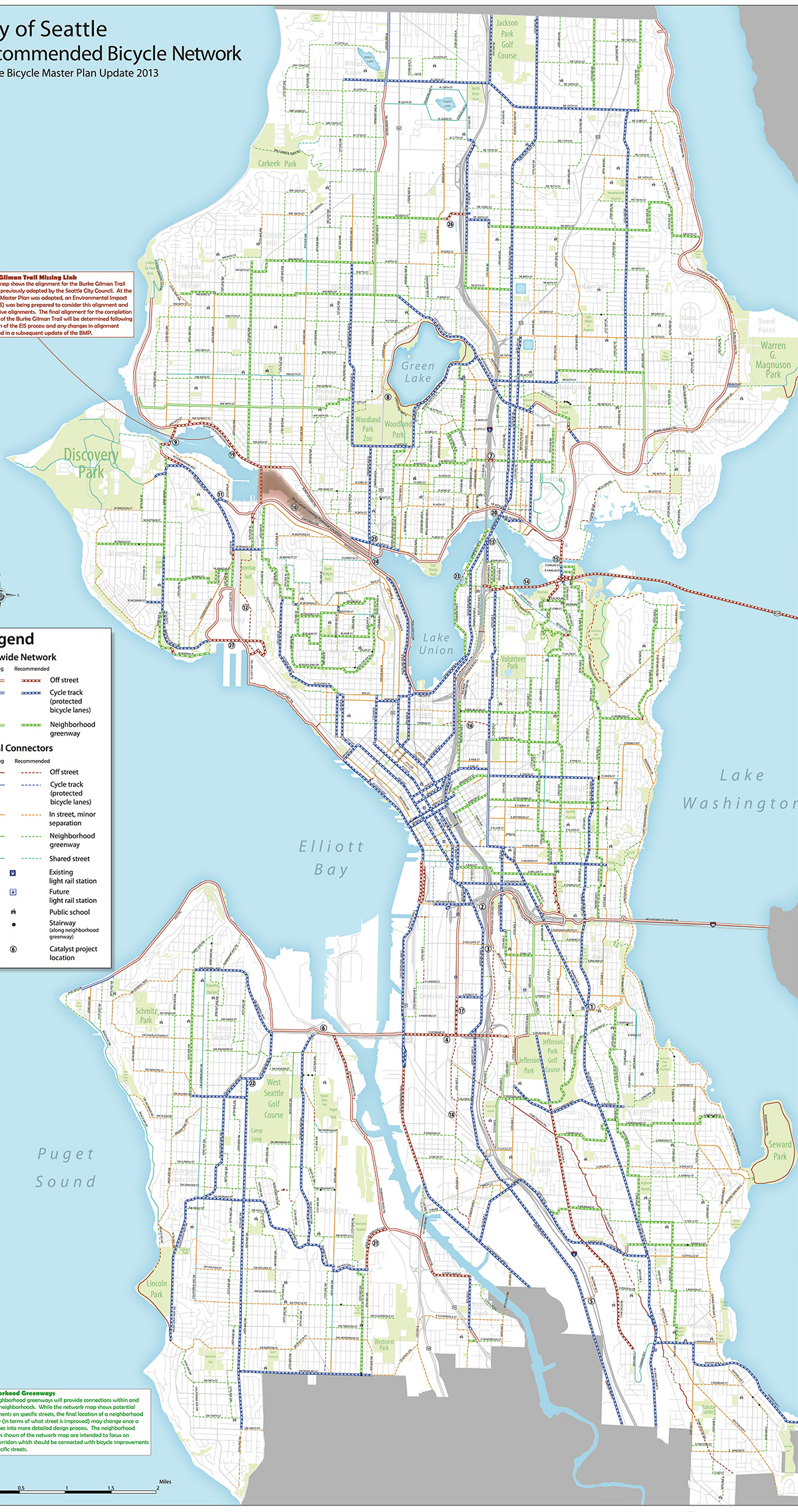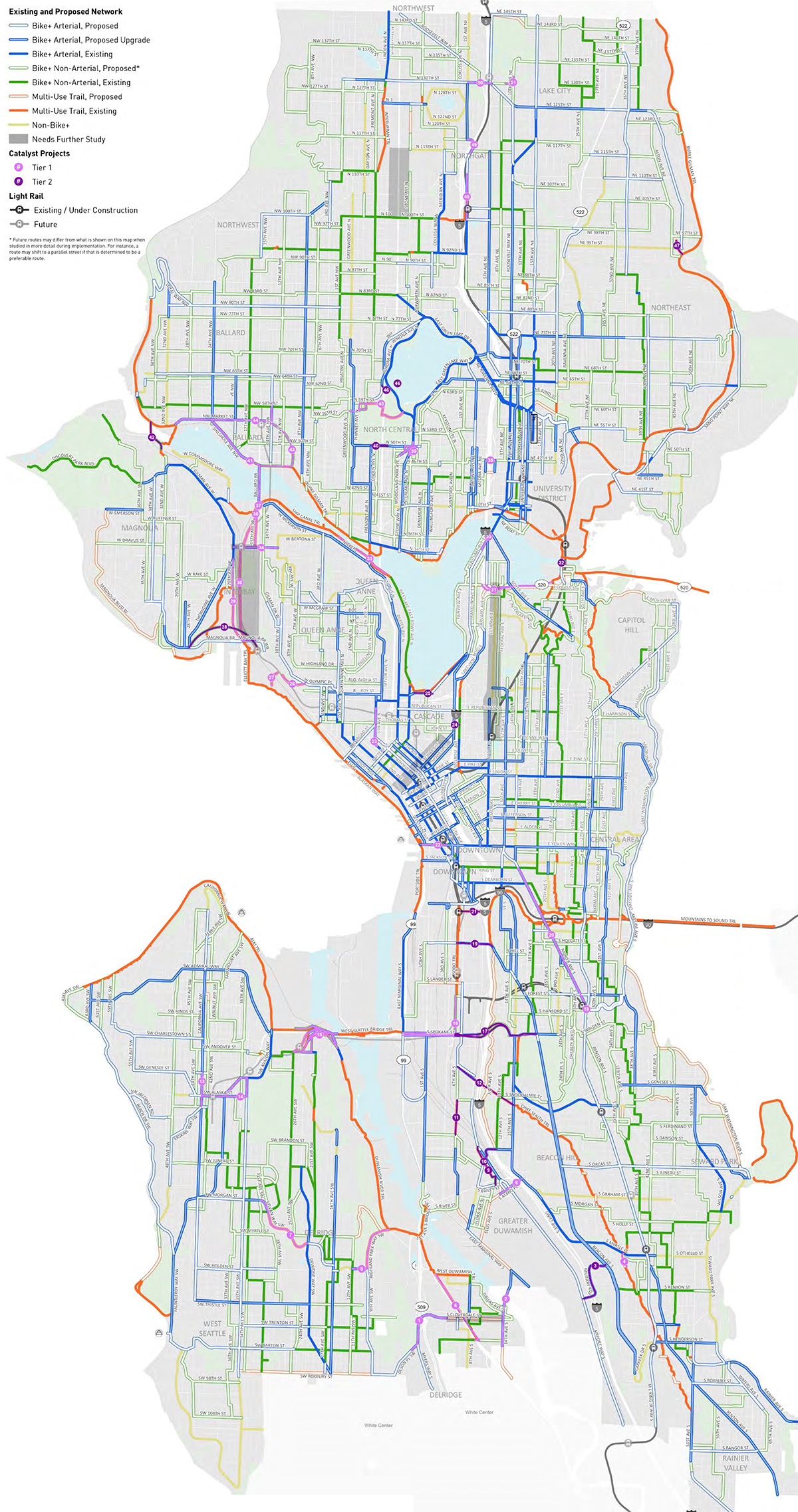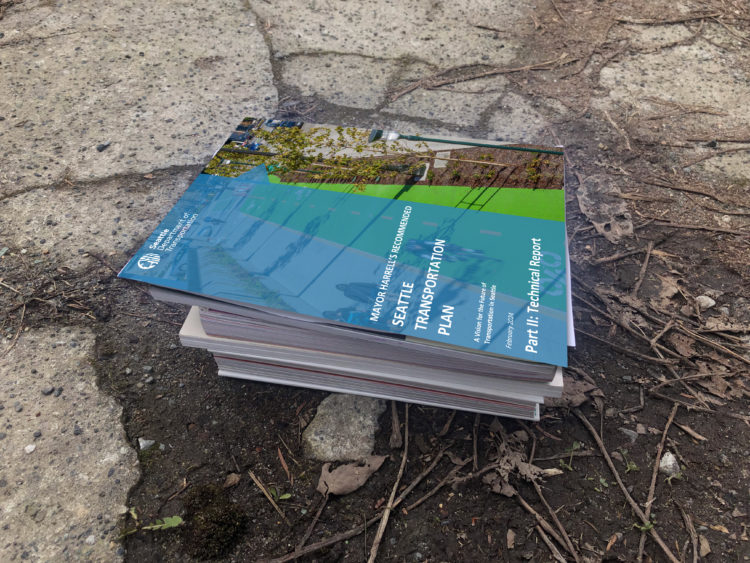
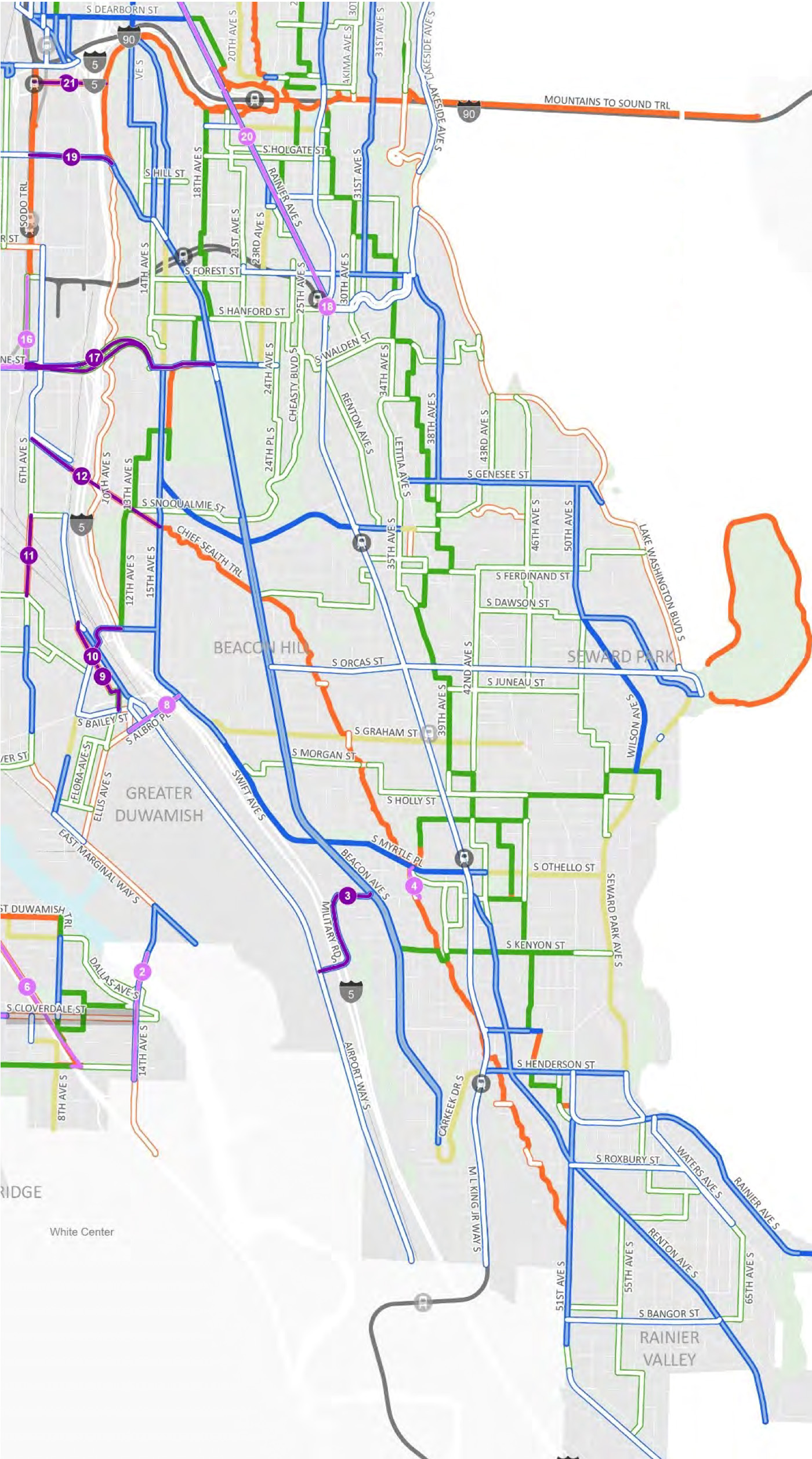
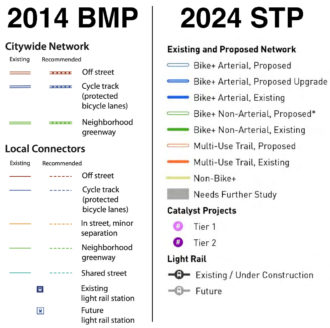
Mayor Bruce Harrell’s proposed Seattle Transportation Plan (“STP”) is now in the hands of the City Council, who can make some final changes before adopting it as official city policy. The STP will supersede the 2014 Bicycle Master Plan, so it’s important to take a close look at its vision for the next 10–20 years of bike improvements across the city. To do so, Seattle Bike Blog will post a series of six stories focusing on different areas of the city. You find other areas as well as other STP-related stories through the 2024 Seattle Transportation Plan tag. First up: Southeast Seattle, including Beacon Hill and the Rainier Valley neighborhoods.
Right away, it should be clear why we needed to break map analysis into a series of posts. There’s so much to talk about here, but let’s get straight into the big one: Northern Rainier Ave S is listed as a “tier 1 catalyst project” with bike lanes between MLK Way S and S King Street. The description says only that it would “provide an all ages and abilities bicycle connection between the Judkins Park light rail station, Chinatown International District, and Mount Baker.” As a tier 1 project, it is among the highest priority catalyst projects. It is likely listed as a catalyst project rather than just another bike lane because it would be complex and require a partnership with WSDOT and perhaps also Sound Transit due to the I-90 access ramps and underpass. For many years, this project has been at the top of the priority list for the Seattle Bicycle Advisory Board because there is no comparably flat and direct option for connecting Rainier Valley and downtown. The area under and around I-90 is also in desperate and urgent need of major safety changes for biking and especially walking, preferably before Judkins Park Station opens. So my major comment here is that the Council should consider ways to bump the priority of this project as high as they can. It stands out among the rest of the tier 1 projects (it’s S tier). Or better yet, earmark year-one funding for it in the next transportation funding measure and maybe even get early design work going ASAP. It would also be a great poster child for showcasing the benefits of voting YES in November. Perhaps no other project in the city would be more impactful for walking, biking and transit access than this one.
Beyond this catalyst project, the STP makes the same decision that the BMP made by calling for protected bike lanes on MLK Jr Way and for no bike improvements on Rainier Ave south of MLK. We argued against this decision back in 2013, and continue to argue against it now. All of Rainier Ave needs to be safe for everyone, including people on bikes. It is where most the neighborhood destinations are, and it cuts against the street grid in such a way that there are many places where there are no viable alternatives. Leaving Rainier out of the city’s bike plan continues to be a mistake.
Much of the good stuff in the BMP is maintained or upgraded in the STP, including many routes on Beacon Hill that were part of a really cool neighborhood-created walking and biking circulation plan from 2011. Here we are 13 years later, and that neighborhood organizing is still imprinted in new city policy documents.
Looking at the plan for Beacon Ave S, it looks great. It calls for protected bike lanes the entire length of the road, which is great. But confusingly, the map notes it as an upgrade from an existing facility when there are no bike lanes at all currently. I think they may be counting sharrows as a bike facility. Because it may have an impact when prioritizing projects, any project on a street with only sharrows should be considered a new facility, not an upgrade. A quick glance reveals a bunch of these around the city (Boyer Ave E and 1st Ave S, are two obvious examples that jumped out immediately). This is a technical fix worth requesting. I think it is safe to say that this sharrow is not providing any value worth factoring into the 2024 plan:
(more…)
